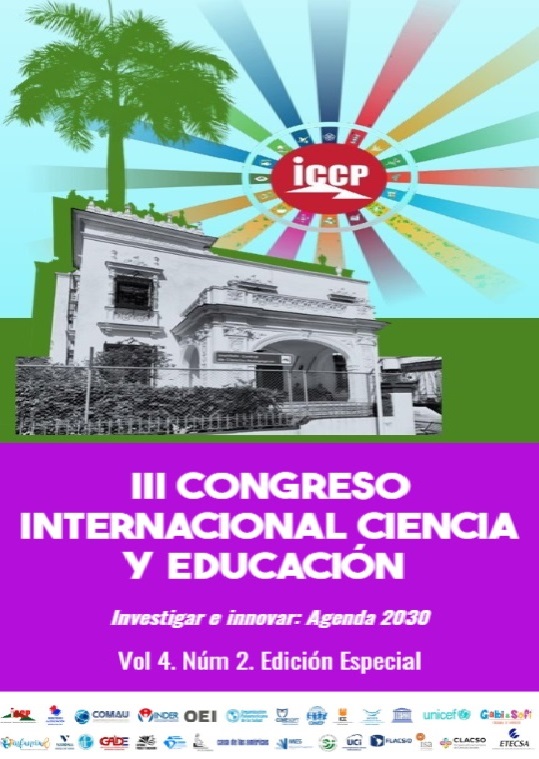Gamification strategy education for learning significative
Abstract
In early education, the implementation of innovative strategies such as gamification has proven to be effective in the development of cognitive and motor skills in children. The main objective of this review is to analyze the effectiveness of gamification as a tool for the development of cognitive and motor skills in early education. The methodology used included the systematic review of the available scientific literature on gamification in early education, as well as the analysis of empirical studies that evaluated the effects of this strategy on the development of cognitive and motor skills in children. The results obtained suggest that gamification can be an effective tool to stimulate learning and skill development in children at an early age. Significant improvements were seen in areas such as problem solving, concentration and motor coordination. In conclusion, the gamification strategy is presented as a promising alternative to enhance the development of cognitive and motor skills in early education.
Downloads
References
Bartle, R. (1996). Hearts, Clubs, Diamonds, Spades: Players Who Suit MUDs. Aquatic Goddess.
Bonwell, Ch. & Eison, J. (1991). Active Learning: Creating Excitement in the Classroom. ASHEERIC Higher Education Report No. 1. ERIC: ED336049.
Cardador, G. (2014). Evaluación de la gamificación de actividades rigurosas en el campus virtual. RIED. Revista Iberoamericana de Educación a Distancia, 17(1), 259-275. doi: 10.5944/ried.17.1.12778.
Carque Poussel, F., Carque Álamos, Y., Cheza, J. y Calzado Bednar, T. (2013). La gamificación como estrategia en la formación de docentes en el uso de las TIC. EDUTEC. Revista Electrónica de Tecnología Educativa, 45(1), 1–19.
Castellanos Soto, P., Martínez Galindo, C. y Freire Martínez, A. (2017). Gaming therapy: aplicación de programas de videojuegos con fines terapéuticos. Estudio Piloto. Publicaciones Sociales, 120, 13-27.
Catelli, L. y Verge, M. (2015). Gamificación en la enseñanza universitaria: tamiz de la experiencia de estudiantes de Medicina en la Facultad de Medicina de la Universidad de Buenos Aires. Eureka, 12(Supl. 2), 32-40.
Coyle, D., McGlade, N., Doherty, L., & Leader, G. (2012). A fun and novel way to assess brain dynamics in children using the Emotiv EEG neuroheadset. Psychnology Journal, 10(2), 199–206.
Csikszentmihalyi, M. (1990). Flow: The psychology of optimal experience.
Deterding, S., Dixon, D., Khaled, R., & Nacke, L. (2011). From game design elements to gamefulness: defining "gamification". In Proceedings of the 15th International Academic MindTrek Conference: Envisioning Future Media Environments (pp. 9-15). ACM.
Gee, J. P. (2003). What video games have to teach us about learning and literacy. Computers in entertainment (CIE), 1(1), 20-20.
Hamari, J., Koivisto, J., & Sarsa, H. (2014). Does gamification work?--a literature review of empirical studies on gamification. In 2014 47th Hawaii International Conference on System Sciences (pp. 3025-3034). Ieee.
Harper & Row. Davies, R. S. (2011). Understanding Technology Literacy: A Framework for Evaluating Educational Technology Integration. TechTrends, 57(5), 45–52.
Johnson, L., Adams, S., & Cummins, M. (2016). Gamification for human factors integration: A literature review. Procedia Manufacturing, 7, 511-516.
Kapp, K. M. (2012). The gamification of learning and instruction: Game-based methods and strategies for training and education. John Wiley & Sons.
Landers, R. N., Bauer, K. N., Callan, R. C., & Armstrong, M. B. (2015). Psychological theory and the gamification of learning. In Gamification in education and business (pp. 23-46). Springer, Cham.
Pesce, C., Crova, C., Cereatti, L., Casella, R., & Bellucci, M. (2016). Physical activity and mental performance in preadolescents: Effects of acute exercise on free-recall memory. Mental Health and Physical Activity, 5(1), 1-8.
Prensky, M. (2001). Digital game-based learning. McGraw-Hill. Werbach, K., & Hunter, D. (2012). For the Win: How Game Thinking Can Revolutionize Your Business. Wharton Digital Press.
Zichermann, G., & Cunningham, C. (2011). Gamification by design: Implementing game mechanics in web and mobile apps. O'Reilly Media, Inc.
Copyright (c) 2024 Kathy Maritza Mera Álvarez,Ángel Marcelo Delgado Guanga,Lilia Alexandra Oña Cataña,Krupzkaya Elizabeth Romero Juelas

This work is licensed under a Creative Commons Attribution-NonCommercial-NoDerivatives 4.0 International License.






